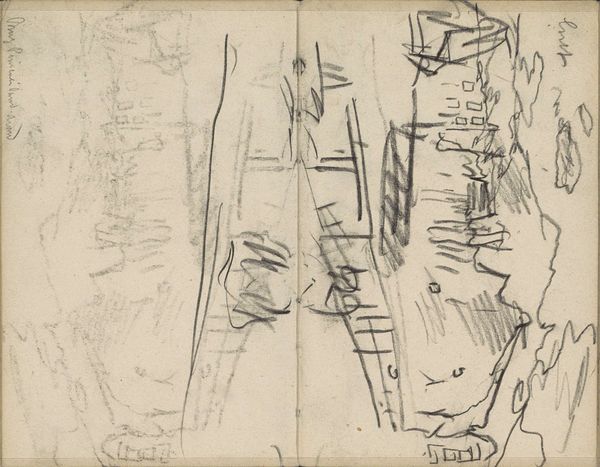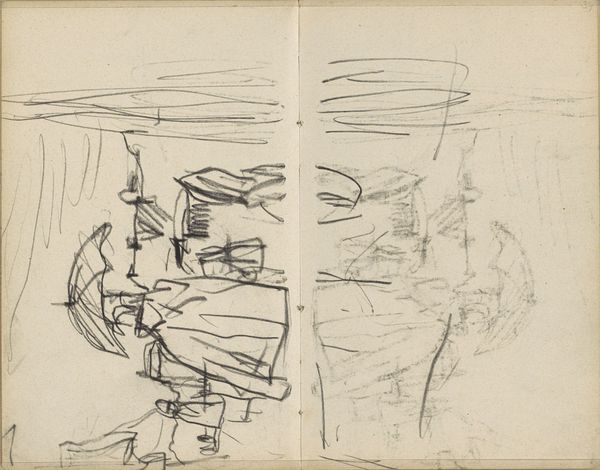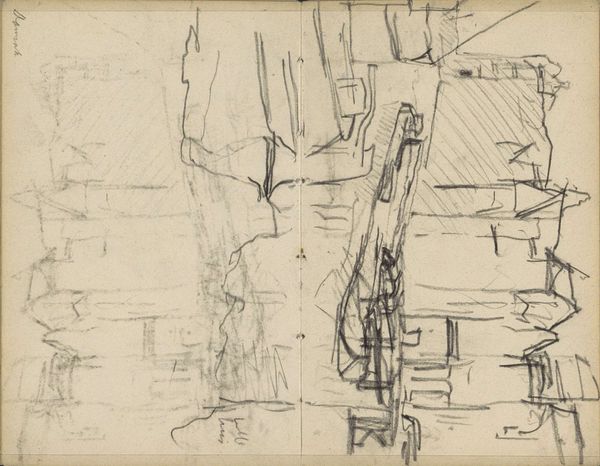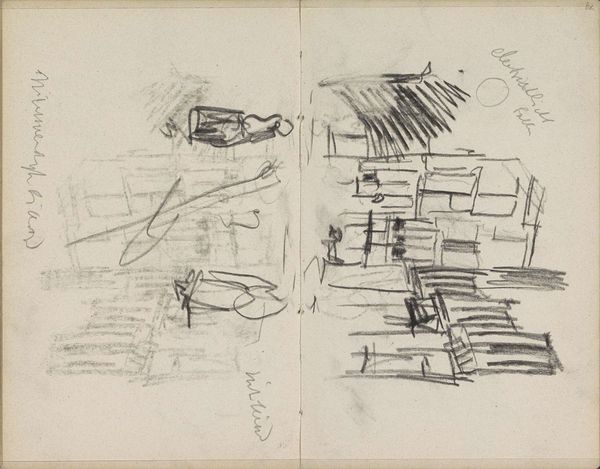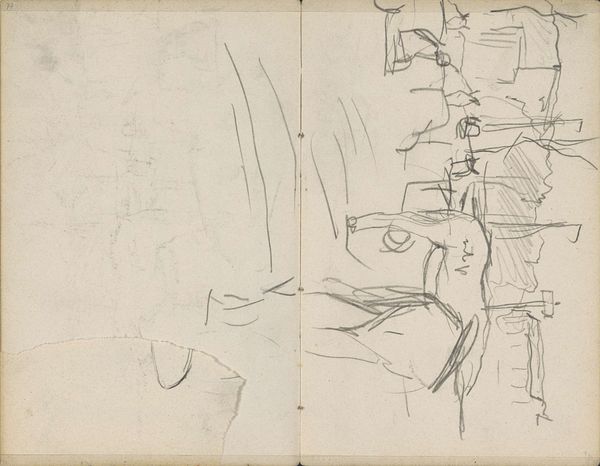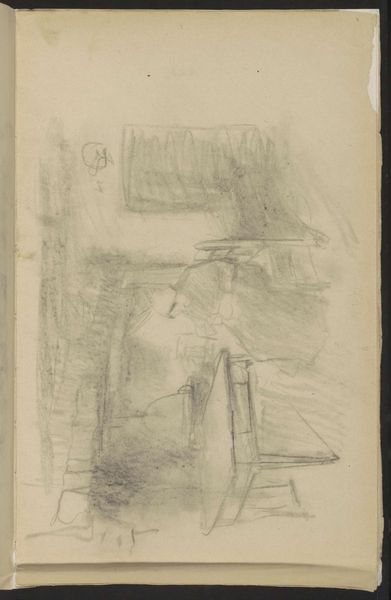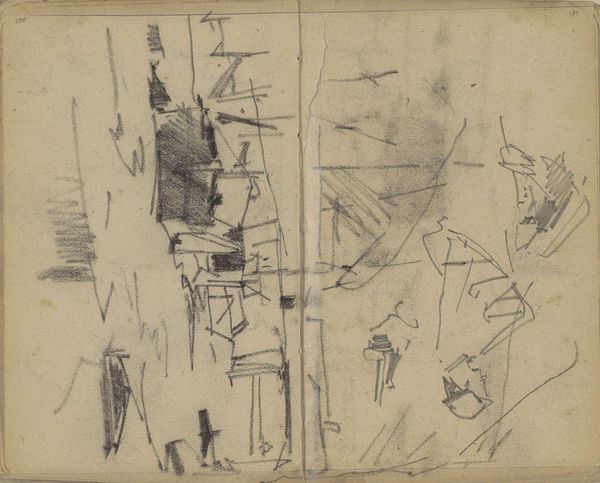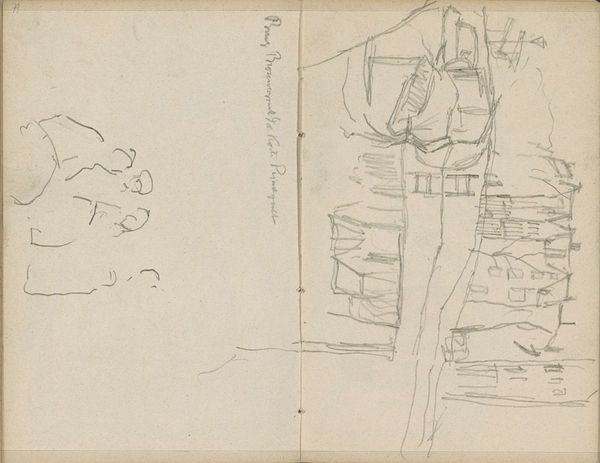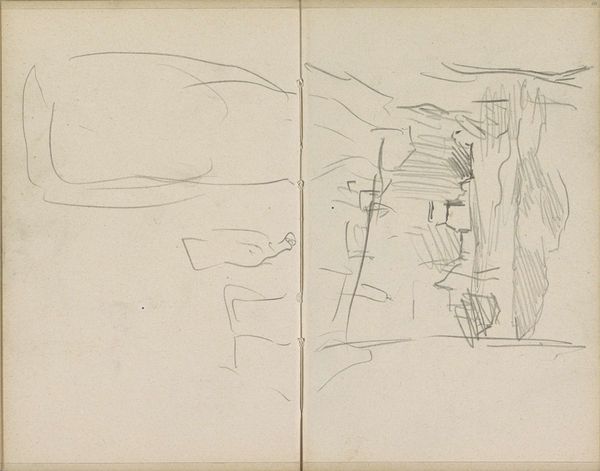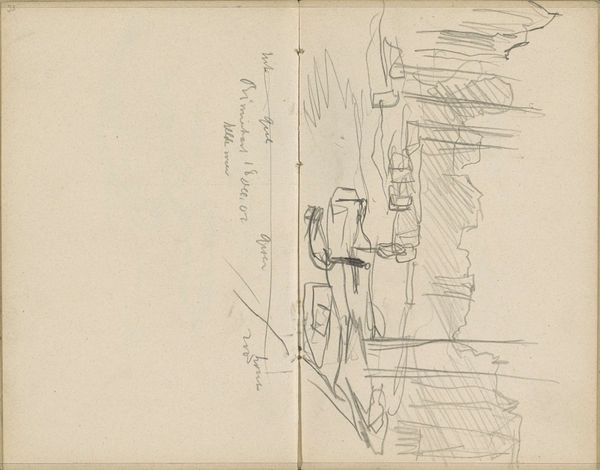
drawing, paper, pencil
#
drawing
#
impressionism
#
landscape
#
paper
#
pencil
#
cityscape
Copyright: Rijks Museum: Open Domain
Curator: This intriguing pencil drawing on paper is entitled "Twee stadsgezichten," or "Two City Views," by George Hendrik Breitner, dating from around 1881 to 1883. It resides here at the Rijksmuseum. Editor: My immediate sense is of raw potential—the fleeting impressions of a city captured in lines. There’s an unfinished quality, almost like a memory struggling to solidify. Curator: Indeed. Breitner, a key figure of the Amsterdam Impressionism movement, often used sketches like this as studies for larger, more polished paintings. He was very interested in capturing the dynamism of the modern city. He would move between capturing a place in a photograph, and recreating those images using traditional techniques. Editor: You see this piece almost operating as some type of predecessor to documentary film, using pencil marks instead of light on film? It’s quite fascinating to view art through the lens of evolving technologies, revealing how art interprets or shapes modern perceptions of an environment, or cityscape. Curator: Absolutely. Consider that photography was still relatively new at this time. Breitner was really engaging with the shift in visual culture by choosing his subjects. It reflects how urban life was perceived by Breitner at the time. Look at the sketch work on the left side for instance, that could be a carriage with blurry marks above to signal quick speed, a horse and rider. These rapid pencil marks demonstrate how fast-paced and industrial city centers could be at this time. Editor: Right. The contrast in density between the dark marks and the more sparse side give it a distinct atmosphere on either side of this double drawing, suggesting perhaps differing degrees of social and human activities. Curator: These weren't necessarily places the aristocracy inhabited. We have to consider who the image serves and what voices Breitner chooses to amplify. In this case, its everyday individuals simply making a living within city life. The museum acts as the voice now interpreting the piece within today’s socio-political and cultural contexts. Editor: A perspective on what’s shared but perhaps not always equally experienced. Food for thought. Curator: Yes, these fleeting, unfiltered impressions invite us to consider what perspectives were deemed worth memorializing—and whose were perhaps overlooked during this transitional time for art and social progress.
Comments
No comments
Be the first to comment and join the conversation on the ultimate creative platform.

